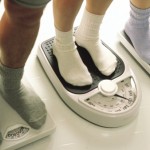Lose Weight > Common Sense To Lose Weight > Common Sense Article > Visiting A Walk In Clinic For Cuts, Abrasions And Lacerations
Visiting A Walk In Clinic For Cuts, Abrasions And Lacerations
A walk in clinic is the new great place to visit when you need to see a doctor. It is no longer the hospital emergency room. We all know how long that can take. Now that the summer is here, we are all spending our free time in the great outdoors doing "our thing." This "thing," unfortunately, will include from time to time, cuts, abrasions and lacerations. When this happens to you, think about a friendly neighborhood walk in clinic instead of the obvious emergency room.
Sure, we speak of cuts, abrasions, and lacerations, but what exactly does that mean? Let's break down the words and explain how exactly they are different from each other.
Cuts
First thing to do when you are cut is to stop the bleeding. Minor cuts will usually stop on their own. Others will need a gentle pressure applied to them with a clean bandage or piece of cloth. Pressure should be applied for twenty to thirty minutes and the wound should be elevated if possible. It is important not to check if the bleeding has stopped as that will dislodge the clot.
It is also important to clean the wound with fresh, clean water from whatever source necessary. Soap can react with the wound in a detrimental way so keep it out of the cut. Remove debris that has ground its way into the wound as this may cause infection. If possible, apply an antibiotic and cover the wound before going to a walk in clinic.
Abrasions
An abrasion is defined as "superficial" damage to the skin, with the wound going no further than the epidermis layer. When we hear the word "superficial" it may deter us from the actual pain and discomfort of a real-life abrasion. These are often times caused by a rough scrape on the ground, as in a bad bike fall, etc.
If you receive an abrasion of any sort remember to clean the wound and remove all debris that has collected in it. A topical antibiotic should be applied. This will help keep the abrasion from becoming infected and will also help to keep the wound from drying out. A dry area will impede the healing process.
Lacerations
This term refers to a jagged more violent type of cut. Initially, it should be treated the same way as cuts and abrasions, by cleaning and applying topical antibiotics. It is important to get to a walk in clinic for more serious treatment to a cut such as a laceration.
A laceration can cause scarring if not treated properly. Proper treatment begins with the cleaning of the wound and the removal of debris. Next, an irrigation of saline can be used to make sure that infection will not occur. This is done because a laceration is much deeper by definition than cuts or abrasions. Only a professional medical doctor, such as in a certified walk in clinic--can make the decisions possible to protect you from infection and scarring. A laceration may be closed with tape or tissue glue. Again, these decisions should only be made by a medical professional.
Sure, we speak of cuts, abrasions, and lacerations, but what exactly does that mean? Let's break down the words and explain how exactly they are different from each other.
Cuts
First thing to do when you are cut is to stop the bleeding. Minor cuts will usually stop on their own. Others will need a gentle pressure applied to them with a clean bandage or piece of cloth. Pressure should be applied for twenty to thirty minutes and the wound should be elevated if possible. It is important not to check if the bleeding has stopped as that will dislodge the clot.
It is also important to clean the wound with fresh, clean water from whatever source necessary. Soap can react with the wound in a detrimental way so keep it out of the cut. Remove debris that has ground its way into the wound as this may cause infection. If possible, apply an antibiotic and cover the wound before going to a walk in clinic.
Abrasions
An abrasion is defined as "superficial" damage to the skin, with the wound going no further than the epidermis layer. When we hear the word "superficial" it may deter us from the actual pain and discomfort of a real-life abrasion. These are often times caused by a rough scrape on the ground, as in a bad bike fall, etc.
If you receive an abrasion of any sort remember to clean the wound and remove all debris that has collected in it. A topical antibiotic should be applied. This will help keep the abrasion from becoming infected and will also help to keep the wound from drying out. A dry area will impede the healing process.
Lacerations
This term refers to a jagged more violent type of cut. Initially, it should be treated the same way as cuts and abrasions, by cleaning and applying topical antibiotics. It is important to get to a walk in clinic for more serious treatment to a cut such as a laceration.
A laceration can cause scarring if not treated properly. Proper treatment begins with the cleaning of the wound and the removal of debris. Next, an irrigation of saline can be used to make sure that infection will not occur. This is done because a laceration is much deeper by definition than cuts or abrasions. Only a professional medical doctor, such as in a certified walk in clinic--can make the decisions possible to protect you from infection and scarring. A laceration may be closed with tape or tissue glue. Again, these decisions should only be made by a medical professional.
Related Articles
-
Smart Substitutions When Dining Out
Many foods offered at restaurants are not prepared in the same healthf
-
Scales Dont Lie But They Dont Tell You Everything Either
The scale: One of mans most popular inventions?But it could be your w
-
An ideal fruit diet menu to help lose weight
If you really want to actualize your dream of losing weight steadil
-
5 fat loss myths that you must not ignore!
I recently gave a presentation to about
-
A Holistic Approach To Weight Loss Fitness
World Health Organization has observed that obesity has now reached ep
-
Steve Harvey’s Weight Loss Journey
(BlackDoctor.org) — Steve Harvey, the King of Come
- DON'T MISS
- 4 Smart Ways To Handle Your Hunger
- Follow These Super Easy Tips For Losing Weight
- Weight Loss - It's in Your Head
- 5 Tips To Stick To Your Weight Loss Goals
- Missing link to fat loss
- Drinking And Dieting
- The Top 10 Tips To Weight Loss Health And FitnessTip 2
- Close Kept Secrets To Weight Loss Lesson 3
- The Diet Solution Programme - Meant for Most
- Healthy Diet for Children: What Every Parent Should Do To Stop Childhood Obesity




